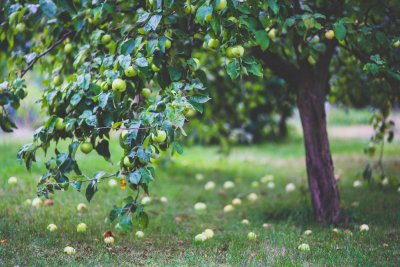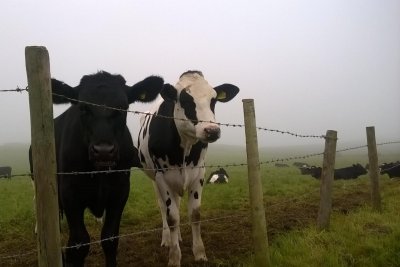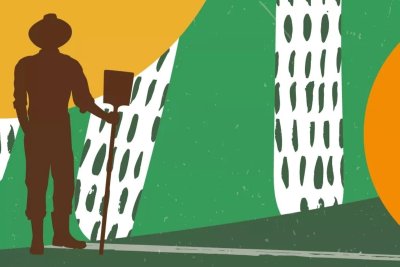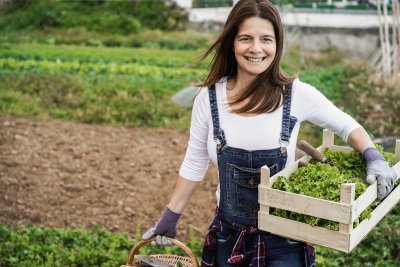News • Sustainable Farming Campaign
EFRA Committee Future of UK Agriculture: farming beyond subsidies
Response by the Joint Agriculture and Trade working Party of Sustain: The alliance for better food and farming and the UK Food Group (1)
Our overarching comments are:
- The EFRA terms of reference are narrow. Agriculture policy affects society as a whole and therefore the Committee should look at how farming 'beyond subsidies' could impact on society, not just farmers. Objectives for agriculture subsidies should be primarily based on health and sustainable development imperatives. In addition the future of UK agriculture depends on far more than agriculture policy reform and so we hope the Committee will examine the role of the market and the role of other policies (such as health, trade, competition) on agriculture.
- It is vital that more evidence is made available on the impacts of models proposed by government and European Commission on farming and food production. This is so that consultation is based on more solid understanding of the issues and there is better evidence- based decision-making.
- Certain measures should be taken at a UK level quickly to indicate a willingness to embrace these sustainable development objectives. Other, more long term changes will require EU wide consensus building and a desire to see world trade rules work for sustainable development, poverty eradication and food security rather than trade per se. We outline some of these short and long terms changes below.
This submission is a collective one, based on discussions and positions of a broad group of organisations, and we wish to submit it as a basis for debate. It does not represent the views of any one member of Sustain or the UK Food Group.
OBJECTIVES FOR EU AGRICULTURE
Considering the CAP, from the perspectives of public interest groups represented by Sustain and the UK Food Group, the following objectives are key:
- Maintain the diversity of farm systems in UK and Europe and stem the loss of farmers and workers from the land
- Recognise and reward the environment and conservation value of whole farm systems by shifting from area/headage payments to rewarding beneficial whole farm management
- Counter the adverse effects of the CAP on developing countries (particularly in relation to market access and export and domestic subsidies)
- Ensure that agriculture policies work to promote, not undermine public health through ensuring safe production systems and a supply of products which promote a healthy diet
- Improve the welfare of farm animals
- Ensure coherence and transparency in decision-making on the CAP and adequate research into all aspects of farm and food policy
In a UK poll prior to the 1992 CAP reforms over two thirds of people felt that 'once the CAP takes into account the protection of the environment and the balance of nature, it can then be supported'(2) . This position is likely to have been strengthened over the years since the 1992 reforms, not least due to the crippling effect of BSE and Foot and Mouth Disease.
The CAP is also a major problem for developing countries, particularly low-income countries where agriculture employs 70% of the labour force and remains a major component of GDP.(3) High EU internal prices to producers, coupled with new technologies and higher yields, have led to chronic overproduction of some agricultural products, which are put on the world market using export subsidies creating surpluses that reduce world prices. This undermines domestic producers in developing countries and crowds out their exports to third country markets.
There is wide ranging consensus for reform in the UK. From the Government, farming community, consumer groups, unions, environmental, development, public health and welfare organisations there is agreement that the way in which the CAP promotes agriculture, either directly or indirectly, is no longer supportable. It is therefore imperative that the next reform achieves better integration of all these concerns. Yet the impact of other factors on the sustainability of farming are equally important - these include the impact of WTO agreements and Doha Round and the impact of concentration and competition within the food industry leading to reduced farm-gate prices and profitability. Changes to CAP alone are not enough to reverse the problems in the farming and food system.
PROSPECT FOR PRODUCTION SUBSIDIES AND QUOTAS
We have been undertaking an analysis of the current and future options for CAP reform.(4) Appendix 1 gives some background material on this work, in particular the 3 main reform proposals we have identified and will be discussing during 2002. Whilst the work has not yet been completed we have been able to draw the following conclusions.
Three main options for reform are being presented by proponents both within and outside the EU:
MODEL 1 - 'modified status quo' = further decoupling of first pillar aids and market support regimes and elimination of export subsidies and import tariffs, but no significant shift of resources out of first pillar measures
MODEL 2 - 'the Cork model' = a significant shift of existing CAP resources from first to second pillar through modulation, degressivity or more ambitious systems such as 'bonds' applied to first pillar aids and market support regimes, and significant enlargement of spending on rural development and environment
MODEL 3 - 'radical liberalisation' = a significant net reduction in support to the agricultural sector involving a major reduction in direct aids and in market support but without an explicit, corresponding increase in aid for other purposes (eg environment and rural development) and the use of much less interventionist policy mechanisms for the sector as a whole
We are currently examining the impact of these three models on the environment, consumers, farmers and developing countries (see Annex 1 for further detail on these scenarios). This work will be completed shortly.
It is vital to understand the likelihood and potential timing of future CAP reform. The bullet points below are designed to highlight some key factors in this process.
- The next proposals for reform are likely to come alongside the EU's 'mid-term review'(MTR) of the Agenda 2000 proposals, which will begin in 2002. However, opinion is divided as to the extent and scope of these expected proposals. Some believe they could amount to a significant revision of the main regimes dealt with under Agenda 2000, while others see them as a much more restricted affair, dealing principally with beef, rye and oilseeds, where EU markets face oversupply and EU budget overspending issues. In any case, some regimes are unlikely to be dealt with at this time, and these include sugar and wine, among the key import/export commodities.
- The EC's official position is that there will be no major reforms until 2006, when the CAP is next due for strategic review and amendment. However, it is possible that enlargement, the ending of the WTO 'peace clause' protecting blue box supports from challenge, in 2002, and the continuing calls from Cairns group for further reductions in domestic support to agriculture, as negotiated following the recent Doha 'Development round' of the WTO, will increase the pace of proposals for reform.
- As regards the 3 archetype models of reform presented, opinion is currently divided as to whether the Commission and Member States are likely, once discussion begins in earnest, to favour either model 1 or model 2. It is generally held that model 3 is unlikely to find favour within the EU decision making fora, even though it may be strongly supported outside the EU. The only factors that might change this view are likely to be budgetary considerations, since both models 1 and 2 involve the implicit maintenance of a substantial budget for the farm sector and/or rural environmental land management. As regards the favoured mechanisms for achieving a shift in resources from pillar one to pillar two, the most commonly mentioned at present is compulsory modulation, while degressivity has some proponents too (notably the UK government, for whom modulation is simply an exercise in pre-emptive degressivity). Bonds have been favoured by academics, including some in fairly influential positions, but so far they have failed to attract the politicians.
OPPORTUNITIES AND DIFFICULTIES FACED BY AGRICULTURE AS A RESULT OF POSSIBLE REDUCTIONS IN PRODUCTION SUBSIDIES
Throughout Europe there is a trend towards a lower farm population and increasing average farm size, accompanied by a sizeable part time farming sector in many countries. Similar trends are evident elsewhere, particularly in the more liberalised economies such as the USA. This trend will be difficult to reverse, despite the mixed evidence about the economic efficiency of very large farms. In the EU, farm size is usually measured either in relation to labour input or turnover or land area. In practice, farms with a relatively large area of land at their disposal may be in a small category under the other two measurements. The bias within the CAP up to now has been towards those with the greatest level of production rather than those with the greatest land area. This could change if area payments become a more widespread tool, particularly in the livestock sector.
Under model 1, because blue box payments would still be linked to production patterns, larger farms would still tend to receive larger subsidies than smaller ones. However the support system would be familiar to small farmers, relatively easy-access and non-competitive, so it could offer some attractions by comparison with model 2. Increased use of cross-compliance could offer some relative benefit to extensive producers compared to those using more intensive methods of production.
Under model 2, in theory, these payments should benefit small farms who manage more extensive or environmentally sensitive holdings, as well as those in marginal areas. However, environmental payments tend to be area based so pay more to larger farms, and where they involve a competitive application process or detailed monitoring and record-keeping, they may fail to attract small farms for whom management time is often more stretched than on larger farms. If progressive forms of modulation are adopted it is possible to discriminate in favour of smaller farms, for example by exempting the smaller holdings from cuts in support payments.
Under model 3, it seems likely that a significant number of small farms in the EU would go out of business as those that survive have to pursue an even stronger drive for low cost production, looking for economies of scale and system. However, evidence from previous economic down-turns is that there can be cost-cutting/value adding strategies that involve staying small and diverse to survive as well as those which involve enlargement and specialisation. A lot depends upon local market opportunities and support to develop new ideas and enterprises, as well as changes in the farm population and the availability of complementary off-farm income.
Model 2 provides a scenario most at favour within the Sustain/UK Food Group membership. However, without unbiased, thoroughly researched information on the impacts on farmers, rural economies, consumers, animal welfare and development, it is not easy to make clear decisions on which direction society should want farming to take. Sustain and the UK Food group believe that it is vital that more evidence is made available on the impacts of models proposed by government and European Commission on farming and food production.
HOW BETTER STEWARDSHIP OF AGRICULTURAL LAND CAN BE PROMOTED
As mentioned at the beginning of this submission, Sustain and the UK Food Group believe that Government objectives, and the mechanisms used to achieve them should embrace far more than stewardship of agricultural land. Certain measures should be taken at a UK level quickly to indicate a willingness to embrace these sustainable development objectives. Other, more long term changes will require EU wide consensus building and a desire to see world trade rules work for sustainable development, poverty eradication and food security rather than trade per se.
Short term changes
Along the lines of a Model 2 scenario, to begin transition from Pillar I (production supports) to Pillar II (rural development and agri-environment) the UK Government should:
- Increase modulation of production supports up to the allowable 20% but tapered so that the measure is targeted at those who can afford it.
- The Treasury must be encouraged to match the funds freed up in this way to support a far wider programme of agri-environment and rural development schemes so that all farmers, for instance, have access to stewardship payments
- Press for structured modulation to become compulsory for all member states in Europe at the 2003 CAP review.
- Work with other European Member States to urge major CAP reform before 2006 and prior to enlargement so that environmental and rural development support can help manage the process of agriculture/rural development in the accession states.
- Organic farming is one of the best ways of delivering sustainable farming and has a key role to play in the future of British farming. There are many bottlenecks holding back the growth of organic sector, leading to high imports and slow development of the sector. The market for organic food must grow sustainably, and currently much headroom exists for the supply of UK organic produce to increase. However in order to avoid over-supply and drop-outs from conversion and to ensure the sustainable growth of the sector, the Government must begin the process of putting in place an action plan for organic food and farming.(5)
- Work to ensure the phase out of all export subsidies (most urgently those for live exports) in tandem with new measures under Pillar II
- Undertake health impact assessments of key commodity regimes (i.e. beef, dairy, fruit and vegetable and sugar) with the aim of mitigating adverse effects on public health.
- Address the need for fairer terms of trade for all food suppliers through a strong and legally binding retailer code of practice. The Code recently published by the DTI on retailers and suppliers should be reviewed after a year's operation to assess whether it is strong enough to improve the relationship between retailers and suppliers.
Long term shifts
The CAP must become a policy for sustainable food production and rural development. This means it should support agricultural systems which do not depend upon external inputs which cannot be guaranteed long term. Where the need to be competitive conflicts with the need for long term sustainability the latter should prevail. It should also be designed to ensure that farmers who grow and rear food using sustainable methods can survive and thrive. The following options can be considered:
- Phase out price support and export subsidies but consider supply management as part of the suite of instruments to ensure appropriate, fair and sustainable EU farming and food production.
- Area and headage payments should be reformed, removing the direct links to production, and introducing new decoupled area payments with environmental and animal welfare conditions, possibly structured to allow for an incremental increase in payments according to level of standards achieved.
- Targeted support to smaller farms and areas of particular social or environmental need
- Assistance must be available for shortening the food chain and enhancing cultural and social benefits of food systems at a regional level. (6)
- All policy must be subject to health, environment, equity/development and welfare assessments to ensure policy coherence.
- Other policy areas will also need to be reformed to take account of the need to protect these farmers from unfair competition and unfair practices elsewhere in the food chain (including companies supplying farm inputs and food buyers).
- ENDS -
Appendix 1
The Main 'Archetype' Reform Proposals
Model 1 - 'modified status quo' = further decoupling of first pillar aids and market support regimes and elimination of export subsidies and import tariffs, but no significant shift of resources out of first pillar measures
This archetype concentrates the process of reform on meeting WTO goals to reduce 'amber box' forms of protectionist policy which still apply to many CAP sectors, which would enable the EU to respond to pressures to cut export subsidies and import tariffs. It would therefore involve reform of the dairy, sugar and olive oil regimes to cut guaranteed prices to these producers and thus would enable the removal of production quotas in dairy and sugar as a consequence. In those regimes which have already become 'partially decoupled' - ie arable crops and beef and veal - it would continue this process by reducing guaranteed prices to world market levels. However, these reforms would not require the removal of direct payments to producers, and it is indeed likely that in those regimes where direct payments do not already exist (eg dairy and sugar), they would need to be introduced as 'compensation'in return for cuts in guaranteed prices. However, in the longer term, in view of enlargement, it is unclear what would happen to direct payments but it is theoretically possible that the enlargement countries could successfully demand such payments for their own producers.
Since under Agenda 2000 the reforms introduced a new ability for the application of environmental cross-compliance to all direct payments under the CAP, this model would provide scope for a form of 'greening' of the policy in that environmental conditions could be applied to an increasing array of the direct payments on offer to different producers. In view of wider developments in EU policy it seems likely that cross compliance would be more widely used than it has been to date, under this scenario.
Key Outcomes
- the EU could eliminate its use of export subsidies and import tariffs
- EU producers would still receive support for producing food but the level of that support would be less directly dependent on current output. However, it would probably largely be based on the area of land farmed, potentially with some 'ceilings' on support for the largest producers (this is more likely to happen in some Member States than others, eg by using modulation of direct aids, as allowed for in the Agenda 2000 reforms)
- the cost of the CAP to taxpayers would increase significantly, while the cost to consumers (processors and retailers) would fall in principle
- the main mechanism for pursuing environmental goals via the CAP would be through cross compliance conditions attached to direct payments and through the existing requirement that these payments should not undermine or contradict 'environmental protection requirements' (eg the requirements of EU environmental legislation). Sectors not getting CAP support (eg Pigs and poultry) would not be affected.
- there is unlikely to be a significant increase in resources devoted to second pillar measures (targeted funds for rural development, farming in marginal areas, agri-environment) since the first pillar would remain so costly
- a likely continued decline in small farms through competitive pressure within the single European market and increasingly with world market competitors, as tariffs reduce
- export dumping using export subsidies would cease, but since EU producers would still be supported by direct aids, they would continue to have a competitive advantage on world markets
Proponents of this model
- Member States who are basically supportive of the CAP and anxious to protect their own farm sectors in a relatively established way (potentially France, Benelux, Spain)
- Major farmers organisations (eg COPA), although these remain unhappy about the use of cross-compliance on direct payments
- Some interests within the European Commission for whom it offers a potentially simple response to WTO issues and a potential simplification of CAP policy instruments, as direct payments are gradually harmonised between regimes (eg adopting a standard payment for all arable crops, over time, and then potentially transforming livestock headage payments into area payments, to increase decoupling and simplify administration).
- Some consumer interests, since it would meet their immediate concerns about removing price supports and quotas and food prices should fall, generally
Model 2 - 'the Cork model' = a significant shift of existing CAP resources from first to second pillar through modulation, degressivity or more ambitious systems such as 'bonds' applied to first pillar aids and market support regimes, and significant enlargement of spending on rural development and environment
This archetype is the classic model essentially underlying the vision expressed in the 1997 'Cork Declaration' on future rural policy in Europe. It involves the gradual transformation of the CAP from a policy focused upon support to the agriculture sector for production and market reasons, to a policy focused upon support to rural areas (predominantly to farm businesses, emphasising farming's role in this), and given for explicit social, rural development and environmental goals. This would entail the reduction of all support given to farmers under the existing production 'regimes' (full decoupling) and its replacement by a raft of policies for environmental management, marginal producers, and the stimulation of rural economies through training, investment and diversification aids. However, a variety of mechanisms has been proposed for achieving this shift in resources from first to second pillars.
- Under compulsory modulation, which would be a development of the current voluntary provisions, Member States would be required to make cuts in direct aids to producers and to use the savings generated in their rural development programmes under the second pillar. Under Agenda 2000, modulation was introduced as an option for MS to use if they so desired, and the UK, France, Portugal and now Germany have all taken up this option or are proposing to do so next year. Currently, modulation money can only be used for agri-environment, marginal farming, farmland afforestation and early retirement aids under the second pillar, but this restriction could be lifted. Importantly, modulation can be applied in a progressive or a neutral way. Member States can use it selectively to cut aids to the wealthiest or largest producers and exempt smaller producers from the cuts, or they can choose to apply it equally to all farms as a standard proportion of the aids they receive. Different interest groups place very different emphasis upon their preferences for using modulation in one or other of these ways. With progressive modulation, it would in theory be possible to attempt to redress some of the current distributive effects of CAP payments which favour larger producers, by cutting their aids much more significantly and protecting aid to smaller farms. However, some critics of this tactic argue that if applied to any significant degree it would simply encourage 'paper splitting' of farm businesses rather than applying a brake on pressures to enlarge and shed labour.
- Under degressivity, progressive cuts in direct aid to producers would be made centrally by the EU, in stages over time, and funds reallocated centrally to the second pillar budget. It is potentially possible for these cuts to be made in a progressive or a neutral way - as with modulation - but it seems administratively unlikely that a progressive method would be adopted and simple, across-the-board percentage cuts in direct payments applying to each regime are more likely.
- Under bonds, the basic method for removing first pillar aid would be to offer farmers a one-off compensation payment rather than direct aids over a continuing period, in return for cuts in guaranteed prices for different commodities. Certain influential agricultural economists (eg Tangermann (D), Swinbank (UK)) favour this option over direct payments because it gives a 'once for all' measure and thus avoids governments getting locked in to continuing compensation which itself becomes a form of producer subsidy.
Of these mechanisms, modulation or degressivity are appropriate for those regimes which already offer direct payments to producers (eg arable, beef, sheep) but in order to apply them to market-supported regimes (eg dairy, sugar) you would first need to undertake further decoupling, as described under archetype 1. Bonds offer the advantage to these regimes that they could be introduced as an alternative to direct payments, but in respect of the arable, beef and sheep sectors the direct payments would have to be ended, if bonds were introduced.
NB As adjustment mechanisms, both degressivity and bonds provide means to cut the size of the first pillar of the CAP, but do not necessarily require the savings to be used to fund the second pillar. For this particular archetype reform proposal, it is generally assumed that they would be applied with an explicit commitment to simultaneously increase resources for the second pillar, on a similar scale.
Key Outcomes
- The existing CAP budget would be largely sustained
- Very little of this would be spent on classic forms of market support and there would be a reduced internal market need for export subsidies or import tariffs, assuming that EU prices fell to nearer world market prices (as has been seen with wheat, already)
- Rural businesses (mainly farms) would instead receive relatively significant sums of money to manage the environment, to keep farming in marginal areas, and to develop and diversify their enterprise mix and sector coverage, as well as assistance with skills development, provision of infrastructure and marketing and processing investment.
- This could effectively give a sufficient level of income support to allow agricultural production to be higher volume or lower cost than without the policy, but the effects are likely to be weak, non-uniform and much less trade distorting than the support regimes that they replace.
- Second pillar aids will target farm businesses in quite a different way to first pillar aids, so there are likely to be large 'gainers' and 'losers' from the policy shift, by comparison with the current pattern of support.
- There would probably be a reduced level of EU production of many significant commodities, particularly those which are currently most heavily supported (eg dairy, oilseeds, wheat, beef, sugar and wine, as well as minor crops like cotton and rice unless these became explicit targets for agri-environment schemes). This would lead to reduced up- and downstream employment in the sectors closest to production. However, agri-environment and rural development schemes may generate new alternative rural employment and in the food processing sector, there could be increased employment opportunities particularly in large agro-industries who may be able to source their raw materials more cheaply.
Proponents of this model
- Most of the environmental NGOs active in the debate in Europe, among whom there is a general view that rural areas need more resources to be available for environmental management and the protection of marginal areas while at the same time removing incentives to intensify agricultural production. It is argued that by decoupling funds from production and recoupling them to the explicit provision of environmental and social goods and services, public money would be more effectively used to produce 'public goods' and the market could be otherwise left to determine patterns and intensities of production, subject to environmental and other regulation.
- Some farming and landowning interests, for whom this scenario represents the most durable long-term way of ensuring that rural areas remain a significant target for future EU funding and support, on the basis of a new 'contract with society' in which they generate the goods and services that the public requires but which are not reflected in conventional markets for food and other products. The European Landowners Organisation and certain smaller farmers' organisations have tended to take this position.
- Several of the 'reformist' Member States' governments broadly subscribe to this view of the desirable future direction of EU policy - notably the UK, Sweden, Denmark and Italy. Currently also the French socialist government and the German social democrats have expressed some support for this view, but there remain strong opponents of their respective positions within their own countries who may be more or less influential in the longer term. However, with all the governments in this group, there is a variety of assumptions implied about the scale of the shift of resources needed from first to second pillar. Among some governments (most notably the UK) there is a clear assumption that more money would be cut from the first pillar than would be diverted into the second pillar - producing a significant net saving on CAP spend overall. In contrast, for other governments (notably France) the implicit assumption is that second pillar spend would fully replace first pillar spend, retaining a substantial CAP budget devoted to rural areas. The German government is particularly schizophrenic on this point - its treasury wishes to reduce CAP spend, but its strong farming lobbies and rural ministers tend to imply that support for rural areas in Germany must be maintained.
Model 3 - 'radical liberalisation' = a significant net reduction in support to the agricultural sector involving a major reduction in direct aids and in market support but without an explicit, corresponding increase in aid for other purposes (eg environment and rural development) and the use of much less interventionist policy mechanisms for the sector as a whole
This archetype is the classic preserve of the mainstream market liberalisers, both in academia and among the export-oriented governments of the Cairns group. It sees the reduction of production support as the primary goal of CAP reform, in order to allow markets to determine a 'more efficient allocation' of resources and to set prices for agricultural goods and services. As such, the proposals involve cutting all guaranteed prices to world market levels and removing export subsidies, import tariffs and quotas on production, as well as removing all direct aid to producers that is even partially linked to production and can thus be said to be 'trade distorting' (full decoupling). In relation to the WTO categories of aid, it would entail removal of all amber box support, removal of all blue box support and potentially, curtailment of some kinds of green box support if these involved substantial and clear effects upon producer costs.
As with archetype 2, this model would have to be applied using one or more of a variety of mechanisms to decouple or remove first pillar supports, which could include degressivity and/or bonds. However, under this option, there would be no related, explicit commitment to 'grow' the second pillar, and indeed any aids under the second pillar would have to be justified and funded independently and in ways which could be demonstrated to cause minimal 'trade distortion'. For example, proponents of this model would be likely to seek to avoid the kinds of agri-environment payment that, for example, supported extensive pasture management by grazing with livestock across large areas of the EU, on the grounds that this effectively subsidises livestock producers in Europe who are then able to sell at reduced prices by comparison with their international competitors. However, they would be less likely to criticise environmental policies which involved paying tightly targeted groups of producers for specific benefits eg managing wetland areas for particular, threatened species of bird or plant.
Key Outcomes
- export subsidies and import tariffs would cease, EU prices would settle at or near world market prices - this implies some greater price instability in the EU than at present, although world prices might become more stable due to the greater scale of EU influence upon them
- in marginal areas of Europe, land prices would fall and abandonment might accelerate
- cost-cutting would be an imperative for survival, particularly in export-oriented sectors
- as production support is dismantled, there is likely to be a major phase of structural adjustment on EU farms including enlargement and the shedding of labour particularly in those regions where current farm sizes are small and relatively 'inefficient' in classic economic terms.
Proponents of this model
- the majority of UK agricultural economists and a proportion of their colleagues in other EU Member States
- the governments of the Cairns group of exporting nations (Australia, New Zealand, Canada, Brazil). At the WTO Ministerial Round at Doha, most of these parties focused their attention on eliminating amber and blue box supports, yet it is generally accepted that if the EU were to shift very large sums of money into green box second pillar aids, these would also be a target for continuing criticism as 'disguised production support' (as is the case for the USA, currently)
- some leading figures in the food industry (eg Lord Haskins) have expressed a strong feeling that agriculture should no longer be supported to a far greater extent than other industries, and this generally translates into a call to dismantle the CAP. However, the interests of the food industry are generally in the removal of price supports, tariffs and production quotas, and they tend to be relatively silent or broadly supportive in relation to the 'second pillar'. Hence it may be unfair to assume that they would generally favour this model over the alternatives presented above.
- some consumer organisations wanting to see reduced prices and increased access for cheaper produce
- some organisations who seek to represent the needs of developing countries, due to the perceived and real problems relating to dumping of subsidised agricultural produce on world markets.
- A minority of environmental NGOs remain unconvinced as to the merits of the second pillar measures of the CAP and thus they would subscribe to the tactic of calling for the removal of the CAP as the first priority, on the basis that this would do more environmental good than harm. Beyond this they would probably recognise the need for management resources for environmental purposes but may feel that this could more effectively be done outwith the mechanisms and politics of the CAP.
---------------------------------------------------------
(1) Sustain: The alliance for better food and farming; Sustain: (formed in 1999 from a merger of the National Food Alliance and the SAFE Alliance) advocates food and agriculture policies and practices that enhance the health and welfare of people and animals, improve the working and living environment, promote equity, and enrich society and culture. It represents over 100 national public interest organisations working at international, national, regional and local level. The UK Food Group is a network of Non-Governmental Organisations from a broad range of development, farming, consumer and environment groups, with strong international links especially with partners in the South.
(2) National Consumer Council, Consumers and the CAP, HMSO, London, 1988.
See UK Food Group/Sustain paper on the WTO Agreement on Agriculture - World Trade Organisation and Food Security, 2001.
(3) Report on the Current Operation of the CAP is due out January 2002, the final report on reform options is due April 2002.
(4) Response to the Policy Commission on Future of Farming and Food
(5) The Organic Target Campaign Steering Group. October 2001
(6) See Eating Oil: food supply in a changing climate, Sustain, December 2001
- ENDS -
Published Saturday 1 January 2000
Sustainable Farming Campaign: Sustain encourages integration of sustainable food and farming into local, regional and national government policies.





